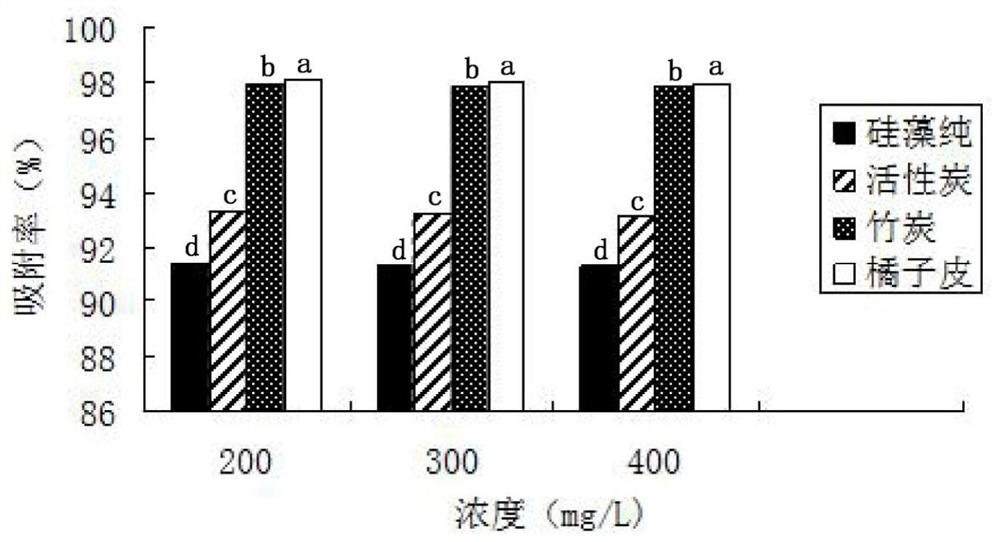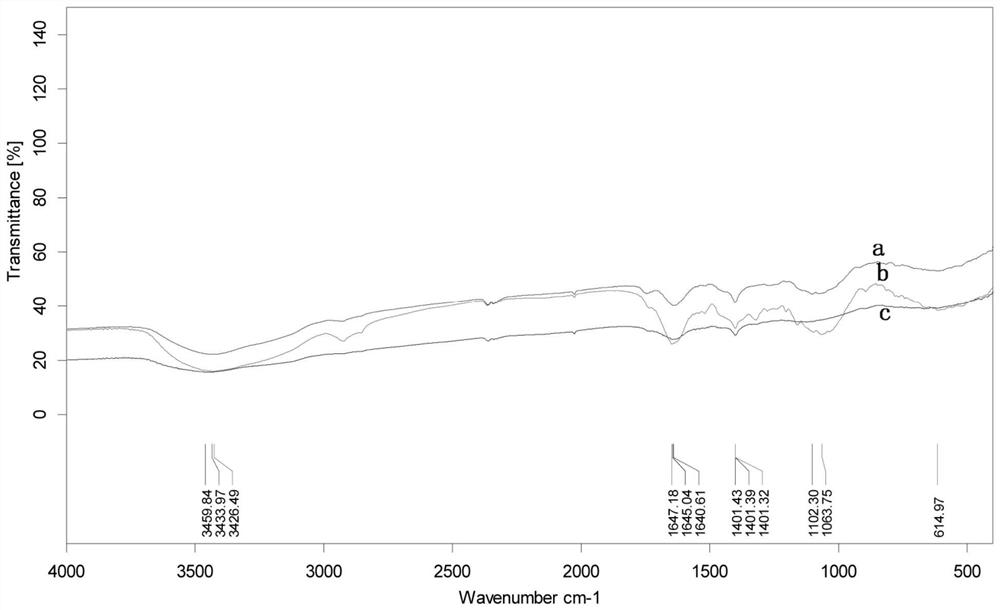Method of using ammonium oxalate to prepare biosorbent for treating salt-based block green dye wastewater
A biosorbent, salt-based block green technology, applied in water pollutants, water/sewage treatment, chemical instruments and methods, etc., can solve problems such as poor removal effect and secondary pollution, and achieve economic circular development and protection. effects of the environment
- Summary
- Abstract
- Description
- Claims
- Application Information
AI Technical Summary
Problems solved by technology
Method used
Image
Examples
Embodiment 1
[0025] A method of using ammonium oxalate to prepare a biosorbent for treating salt-based block green dye wastewater in this embodiment, the specific steps are as follows:
[0026] 1) Washing: Collect waste orange peels from food factories as materials and rinse them clean;
[0027] 2) Drying: place the washed orange peel in a constant temperature drying oven at 60°C and 6.67×102Pa to dry to constant weight;
[0028] 3) Cutting: Cut the dried orange peel into 3-5cm long pieces;
[0029] 4) Cooking: Put the orange peel pieces in boiling water at 100°C and boil for 40 minutes;
[0030] 5) Soaking in ammonium oxalate: cool the cooked orange peel to room temperature, soak in ammonium oxalate solution with a concentration of 1%, and place in a constant temperature water bath at 25°C for 50 minutes;
[0031] 6) Alkali soaking: soak the washed orange peel pieces in a sodium hydroxide solution with a pH of 12 for 50 minutes;
Embodiment 2
[0047] A method of using ammonium oxalate to prepare a biosorbent for treating salt-based block green dye wastewater in this embodiment, the specific steps are as follows:
[0048] 1) Washing: Collect waste orange peels from food factories as materials and rinse them clean;
[0049] 2) Drying: place the washed orange peel in a constant temperature drying oven at 70°C and 6.67×102Pa to dry to constant weight;
[0050] 3) Cutting: Cut the dried orange peel into 3-5cm long pieces;
[0051] 4) Cooking: put the orange peel pieces in boiling water at 100°C and boil for 60 minutes;
[0052] 5) Soaking in ammonium oxalate: cool the cooked orange peels to room temperature, soak them in ammonium oxalate solution with a concentration of 2.5%, and place them in a constant temperature water bath at 20°C for 60 minutes;
[0053] 6) Alkali soaking: soak the washed orange peel pieces in a sodium hydroxide solution with a pH of 13 for 20 minutes;
Embodiment 3
[0087] A method of using ammonium oxalate to prepare a biosorbent for treating salt-based block green dye wastewater in this embodiment, the specific steps are as follows:
[0088] 1) Washing: Collect waste orange peels from food factories as materials and rinse them clean;
[0089] 2) Drying: place the washed orange peel in a constant temperature drying oven at 65°C and 6.67×102Pa to dry to constant weight;
[0090] 3) Cutting: Cut the dried orange peel into 3-5cm long pieces;
[0091] 4) Cooking: Put the orange peel pieces in boiling water at 100°C and boil for 50 minutes;
[0092] 5) Soaking in ammonium oxalate: cool the cooked orange peels to room temperature, soak them in a 0.5% ammonium oxalate solution, and place them in a constant temperature water bath at 60°C for 20 minutes;
[0093] 6) Alkaline soaking: soak the washed orange peel pieces in a sodium hydroxide solution with a pH of 11 for 60 minutes;
[0094] 7) Hydrogen peroxide soaking: fully rinse with distille...
PUM
 Login to View More
Login to View More Abstract
Description
Claims
Application Information
 Login to View More
Login to View More - R&D
- Intellectual Property
- Life Sciences
- Materials
- Tech Scout
- Unparalleled Data Quality
- Higher Quality Content
- 60% Fewer Hallucinations
Browse by: Latest US Patents, China's latest patents, Technical Efficacy Thesaurus, Application Domain, Technology Topic, Popular Technical Reports.
© 2025 PatSnap. All rights reserved.Legal|Privacy policy|Modern Slavery Act Transparency Statement|Sitemap|About US| Contact US: help@patsnap.com



